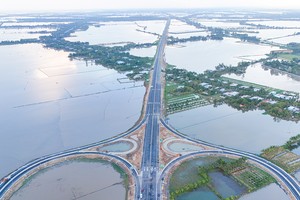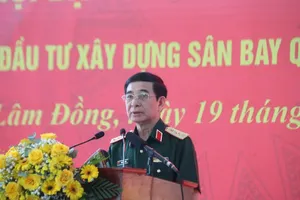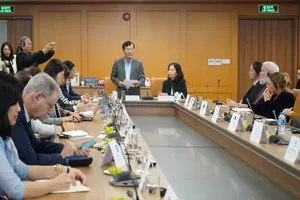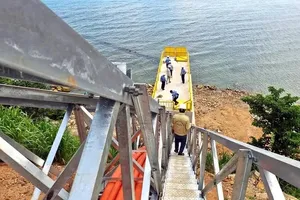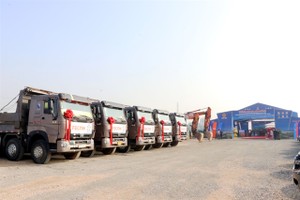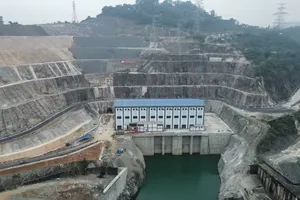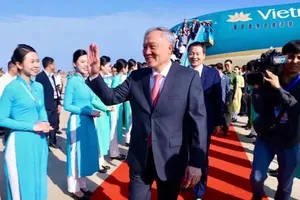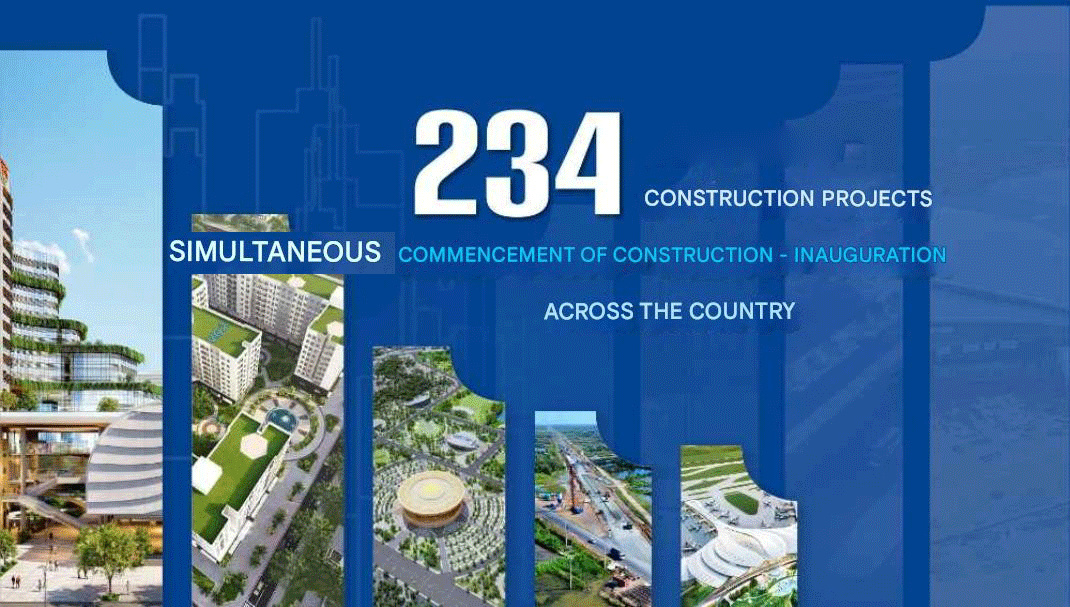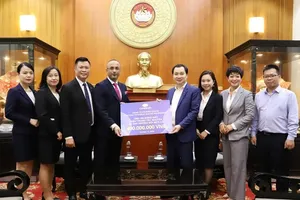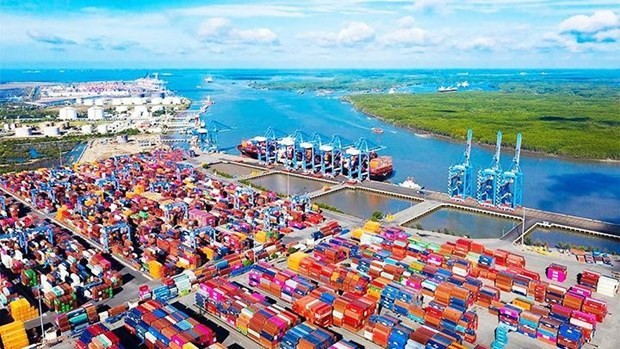 |
Seaports help drive economic growth of the Southeastern region. (Photo: nhandan.vn) |
The Southeastern region includes Ho Chi Minh City and the provinces of Tay Ninh, Binh Phuoc, Binh Duong, Dong Nai and Ba Ria - Vung Tau.
Politburo Resolution No. 24-NQ/TW dated October 7, 2022 on socio-economic development, defence and security in the Southeastern region to 2030, with a vision to 2045 clearly states insufficient infrastructure, particularly in transport, causes "bottlenecks" that adversely impact the region's development.
Five axis motorways and three belt routes were planned to connect Ho Chi Minh City with other localities in the Southeastern region. However, at present, besides National Highway 1, Ho Chi Minh City - Long Thanh - Dau Giay expressway is in its first phase, Ben Luc - Long Thanh expressway is receiving investment, while the remaining connecting motorways have not been upgraded and expanded according to the plan.
Parallel highway projects are implemented slowly. Ring roads No 2, No 3 and No 4 have not been built. The gateways and connecting axes between Ho Chi Minh City and neighbouring localities are often congested, especially at rush hours.
According to Ho Chi Minh City’s Department of Transport, the regional linkage mechanism fails, so each locality develops transport infrastructure without synchronisation. As a result, gateway roads are crowded, which hampers economic activity in each locality and the whole region.
In Ba Ria - Vung Tau province, Cai Mep - Thi Vai deep-water port cluster is among seaports with the fastest growth in the world, but its transportation system that connects the port with industrial zones and clusters in the region is woefully inadequate. National Highway 51 is currently the only road connecting Ba Ria - Vung Tau with other provinces and cities in the Southeastern region.
Although the Bien Hoa - Vung Tau expressway project is being sped up to start work, it is still necessary to build a railway extending from Bien Hoa to Cai Mep.
Representatives of port authorities in major ports such as Cai Mep-Thi Vai International Container Terminal, Tan Cang Cai Mep, Gemalink also confirmed that traffic limitations are "bottlenecks" hindering the development of this deep-water port cluster.
Besides, the Saigon port system including Cat Lai Tan Cang, Cai Mep, and Hiep Phuoc ports is the gateway of the South in foreign trade activities. Saigon port system ranks in the top 20 largest ports in the world as of 2020. However, the actual traffic infrastructure has not kept pace with the growth rate, resulting in traffic congestion, especially around the port area.
According to Chairman of the Ho Chi Minh City Logistics Association Dang Minh Phuong, Cat Lai port planned to receive 3 million TEUs yearly but actually received 5 million and up to 8 million soon. Therefore, traffic around the port area is always congested, increasing the operating costs of logistics enterprises and reducing the competitiveness of the industry.
Located near Dong Nai province - the most developed industrial region in the country, Binh Phuoc province does not have a road connecting to Dong Nai although the traffic system is quite complete. Currently, many enterprises in Dong Nai have expanded production and set up processing factories in Binh Phuoc, but businesses are not really interested in Binh Phuoc because of a lack of connecting roads.
Further coordination
According to the Ho Chi Minh City People's Committee, coordinated plans would help localities develop transport infrastructure projects.Minister of Transport Nguyen Van Thang emphasised that it is necessary to focus on some key solutions including the renewal of thinking and vision, promoting the dynamism and creativity of the provinces and cities in planning, management, investment and development of regional transport infrastructure.
Cooperation and linkage between regions in transport infrastructure needs to be strengthened to create a unified economic space, overcome bottlenecks, and increase competitiveness, he said.
Secretary of the Ho Chi Minh City Party Committee Nguyen Van Nen said that for better regional linkage, the plans and resources and the points of view of the communities are needed. “Not only road traffic, networks of air, waterway and railway transportation need to be reviewed and promoted,” he said.
From now to 2025, with a vision to 2030, Ba Ria - Vung Tau province also plans to focus on increasing transport connectivity with the construction of the Bien Hoa - Vung Tau expressway and a section of Ho Chi Minh City’s Ring Road 4 running through the province.
Deputy Director of the Department of Transport of Ba Ria - Vung Tau province Luong Anh Tuan said that inter-provincial and inter-regional transportation was identified as a vital issue in promoting the potential and advantages of the locality.



